Plant Reproduction (Anatomy & Pollination)
This lesson covers:
- The male & female reproductive parts of a flowering plant
- What 'self pollination' & 'cross pollination' are
- How flowers are adapted for insect & wind pollination
Anatomy of a plant's flowers The flowers of plants have both male and female reproductive parts. 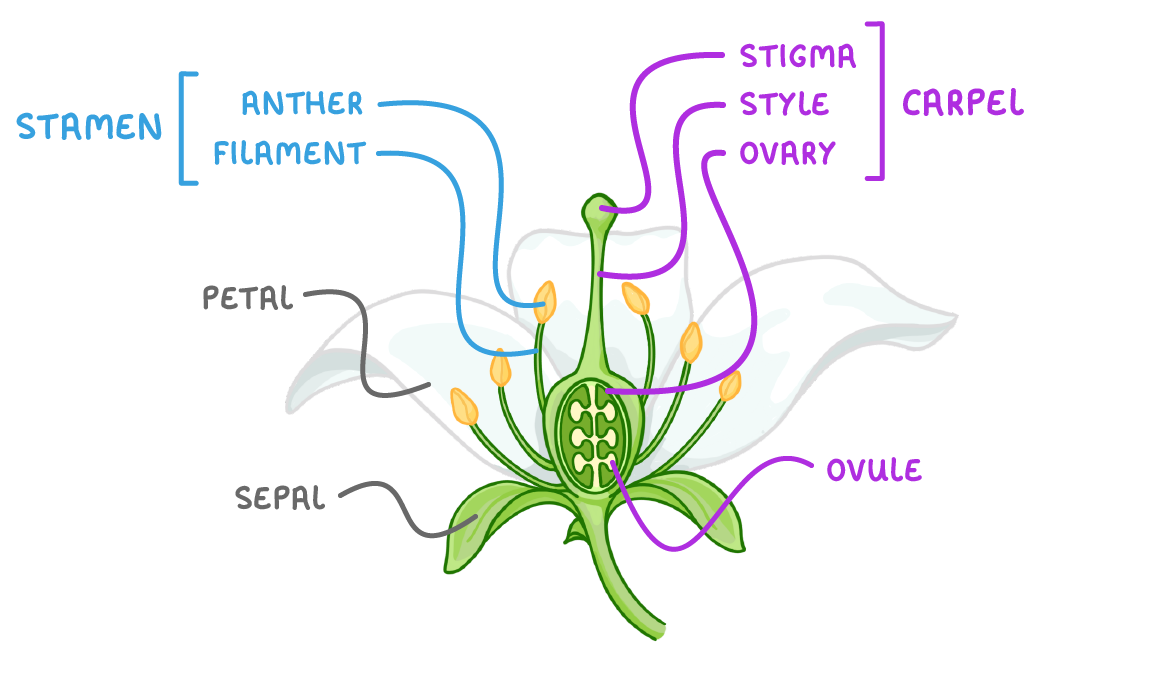 |
Male parts Stamen - the male organ of the flower. Basically 'stamen' is a word for the anther and filament combined. Anther - the part of the stamen where pollen is produced. Filament - the stalk that holds up the anther. Female parts Carpel - the female organ of the flower. Consists of the stigma, style, and ovary. Stigma - the sticky tip that pollen attaches to. Style - the stalk that holds up the stigma, and that the pollen tube will grow down. Ovary - the structure that contains the ovules. Ovules - the female gametes. You can think of these as equivalent to eggs in animals. |
Neutral parts Sepal - the outer green part of the flower, that encloses the flower bud whilst it develops. Petal - Modified leaves that are used to attract insects. |
Pollen is made in the __________
Style
Stigma
Filament
Ovary
Anther
|
Which structures make up the stamen?
(Select all that apply)
Style
Ovary
Anther
Filament
Stigma
|
Which structures make up the carpel?
(Select all that apply)
Anther
Filament
Stigma
Ovary
Style
|
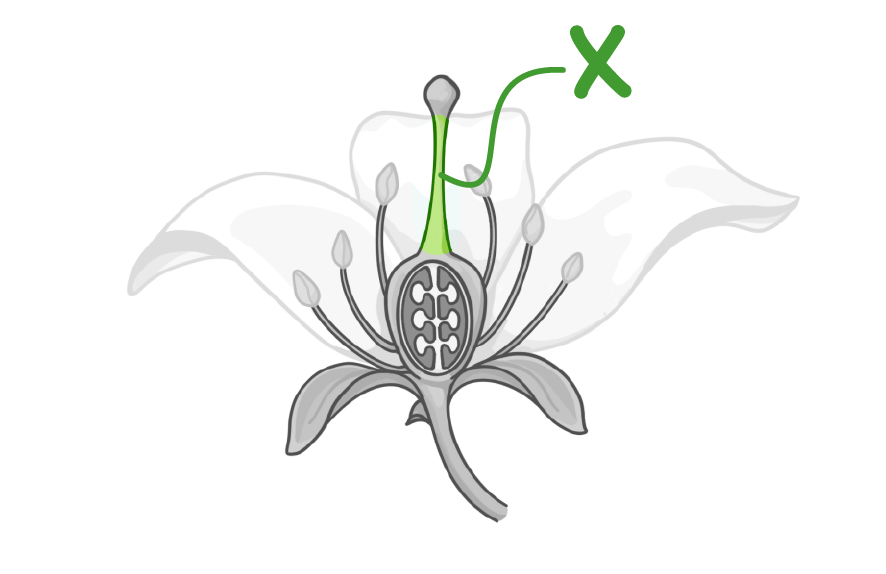
What is the structure labelled X on the diagram above?
|
What is the role of the stigma?
To collect pollen grains
To hold up the anther
To attract insects
|
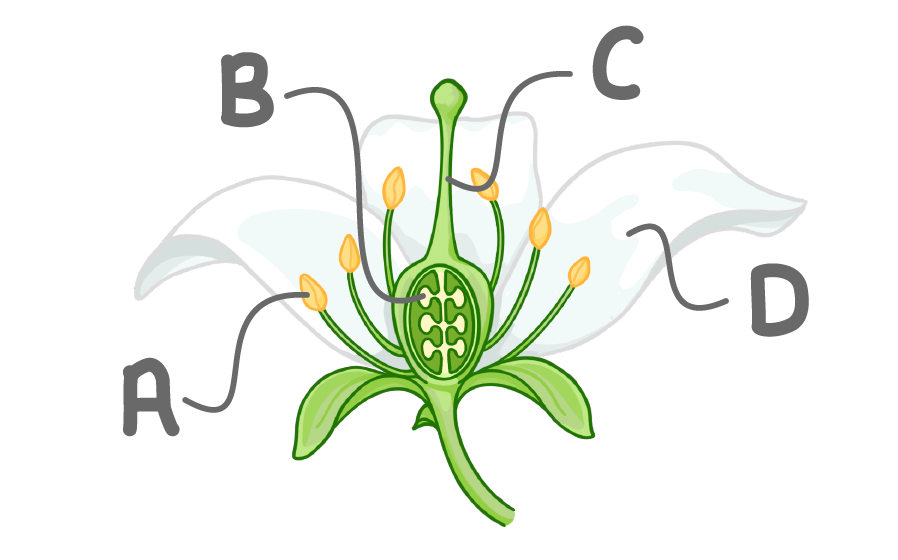
Which letter represents the ovule (female gametes) on the image above?
A
B
C
D
|
The carpel is the _______ part of the flower
male
female
|
Pollination During plant reproduction, pollen grains need to move from the anther of one flower to the stigma of another flower. We call this process pollination. This is an important first step before fertilisation can happen. |
There are two types of pollination you need to know about: |
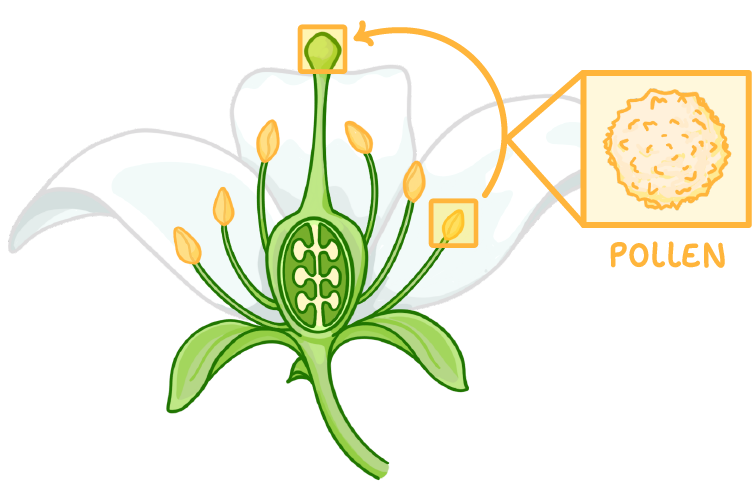 Self-pollination is the transfer of pollen grains from an anther, to a stigma of the same plant. It could be the very same flower, or another flower on the same plant. |
 Cross-pollination is the transfer of pollen grains from an anther of one plant to a stigma of a different plant. The other plant does have to be the same species though. |
Pollination is the process by which pollen grains move from the of one flower to the of another flower.
|
Cross-pollination via insects and wind |
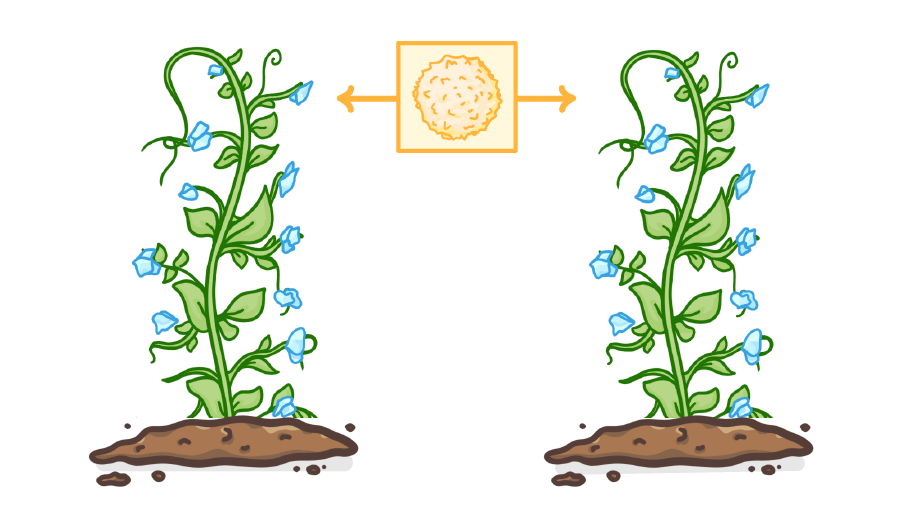 In order for plants to cross-pollinate, the pollen grains have to travel between plants. Plants themselves can’t transport the pollen grains, and so instead rely on insects or the wind. |
Plants have different adaptations depending on the method of pollination they use. |
Adaptations for insect pollination
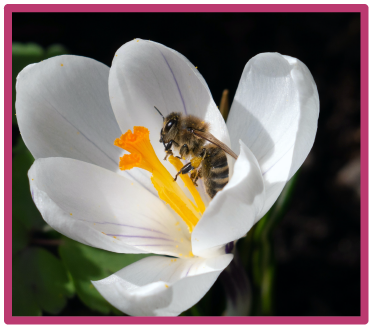 |
Adaptations for wind pollination 
|
"Pollen grains are transferred from the anther of one plant to a stigma of a different plant"
Is the following statement describing self pollination or cross pollination?
Self pollination
Cross pollination
|

This image shows a bee drinking nectar from a flower.
You can see lots of little orange pollen grains that have stuck to the bee's body. These can then rub off onto the stigma of this flower or another flower.
Which of the following adaptations are you likely to find in wind-pollinated flowers?
(Select all that apply)
Small, light pollen grains
Scented flowers
Large feathery stigmas
Long filaments with anthers that hang out of the flower
|
Which of the following adaptations are you likely to find in insect-pollinated flowers?
(Select all that apply)
Large sticky pollen grains
Brightly coloured petals
Large feathery stigmas
Nectaries producing nectar
Small, light pollen grains
|